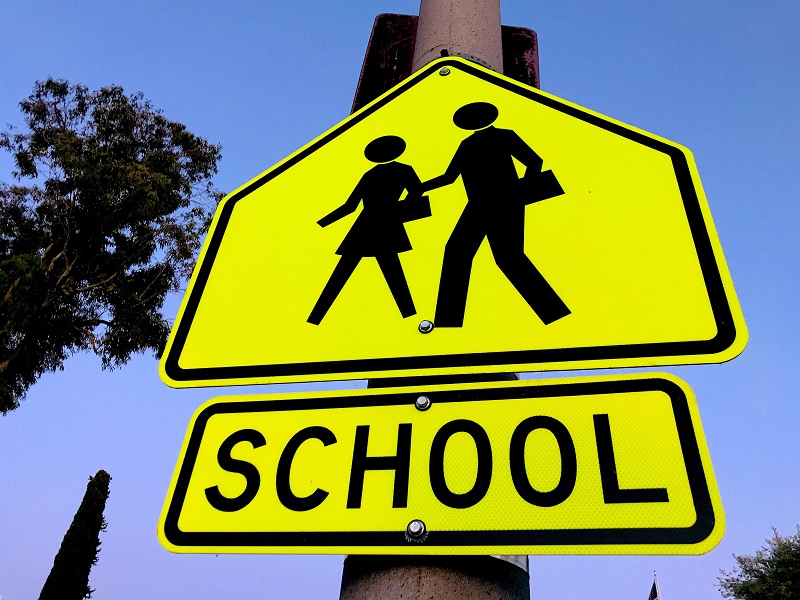
1. Don't exceed your limit - Typically, a school zone is 20 miles per hour in a residential area, and can be as high as 35 or 40 mph in a highway area. Fincher warns that these are maximum speeds, and most law enforcement officers don't have a "buffer" zone of a few miles per hour over the limit. "By the time you reach the sign marking a school zone, you should be at or under the speed listed on it," said Fincher. "The difference between, say, 20 and 25 miles per hour may not amount to much on the open roads, but it can spell the difference between life and death when youngsters are running about."
2. Keep an eye on the time - Each school zone has a clearly marked time frame on the sign (a few exceptions are on flashing signs, discussed below). "For all sorts of reasons, peace officers are sure to keep very accurate time on their watches," said Fincher. "If we pull you over in a school zone and our watch says 8:31 and yours says 8:29, chances are very good that it's your watch that's wrong, and that won't get you out of a citation." Fincher suggests drivers buffer a couple of minutes on either side of a school zone time frame.
3. Don't ignore the flashing - Many school zones include yellow flashing lights; in fact, some school zones don't include time frames printed on them and these lights are the only indicator of when they are in effect. Fincher warns that ignoring these flashing lights, even when it is outside of the typical time frame or over summer or on a weekend, can lead to a citation. "Frequently, there are extracurricular activities, or summer school, or special situations where these lights are flashing for a reason. If you see these lights, you should treat the school zone as if it is active, no matter what the time."
4. Ditch the distractions - You're not allowed to use your cell phone wile going through a school zone in Montgomery County. Fines for using a cell phone (or other handheld electronic device) can reach up to $250. "The human race survived for decades without cell phones," said Fincher. "You can afford to put yours down for the few seconds or minutes you may be traveling through a school zone. If for some reason you feel you can't hang up or put on hold, then pull over before you reach the school zone to finish your call." Fincher warns that hands-free devices such as integrated speaker phones, while technically legal to use in a school zone, can still distract a driver enough to potentially cause harm to a pedestrian.
For more information concerning school zones or other traffic-related questions, Fincher encourages people to call the Montgomery County Constable's Office - Precinct 1 at 936-539-7821.


